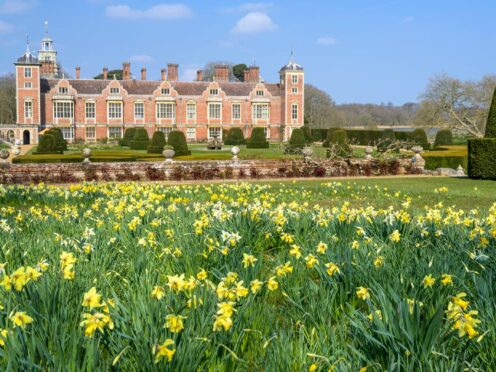
Precious carpets, upholstery and tapestries in historic houses were a little bit safer last year, as clothes moths numbers fell 18%, the National Trust has said.
The conservation charity said overall pest numbers were down 11% compared to 2022, continuing a fall from lockdown highs, in its annual report on problem insects in its historic properties.
But there was less good news for books, paper and cotton collections cared for by the Trust, as the bug silverfish which feeds on them retained top spot in the pest leaderboard, with a 6% rise in recorded numbers.
The report collates information gathered by historic house staff around the organisation, and helps it safeguard more than a million collection objects from precious books and tapestries to silk hangings on state beds, it said.
The 18% drop in clothes moths, the larvae of which can damage carpets, upholstery, woollen and silk objects and even taxidermy, follows on from a 39% slump the previous year.
The falls come after pests increased at National Trust properties in 2020, in the relative quiet, darkness and absence of disruption in the Covid lockdowns.
The Trust’s assistant national conservator Alexandra Radford, who compiled the report, said: “The alarming increase we saw in 2021, driven by lockdown closures, is now a distant memory. This is excellent news for all our collections.
“The drop is likely because pest numbers are still falling from their lockdown highs, but it also reflects the decisive action and relentless efforts of house teams to manage moth numbers.
“We’ve put in place more training and resources to help property teams with integrated pest management, which is crucial to good collections care.”
The turbulent weather now being seen in the UK is also having an impact of the breeding cycles of bugs in stately homes, with last year one of the warmest on record for the UK and a wet year for many, the Trust said.

Ms Radford said: “Without a doubt, the ongoing unpredictability and extremes in temperatures and moisture are feeding through into insect breeding cycles and patterns.
“In the past, we saw a more distinct spike in breeding cycles, but these are becoming blurred.
“Optimum breeding conditions are starting earlier and carrying on for a longer period of time to create one long reproductive season. ”
Knowing that will help house teams prepare for the peak times when nymphs and larvae begin to emerge, so they can take action before they start causing problems, she said.
Along with silverfish, booklice and carpet beetle larvae known as woolly bear, which both graze on mould so higher numbers are expected when there is very wet weather and high humidity, are also on the rise.
Silverfish also seek out and thrive in damp environments which means intense rainfall conditions can boots their numbers.
But the report found positive news from the East of England where monitoring showed steady declines in pest counts in houses, helped in part by work to control clothes moths and silverfish at Blickling Hall in Norfolk, with a trial of moth pheromones proving particularly effective.

Enjoy the convenience of having The Sunday Post delivered as a digital ePaper straight to your smartphone, tablet or computer.
Subscribe for only £5.49 a month and enjoy all the benefits of the printed paper as a digital replica.
Subscribe